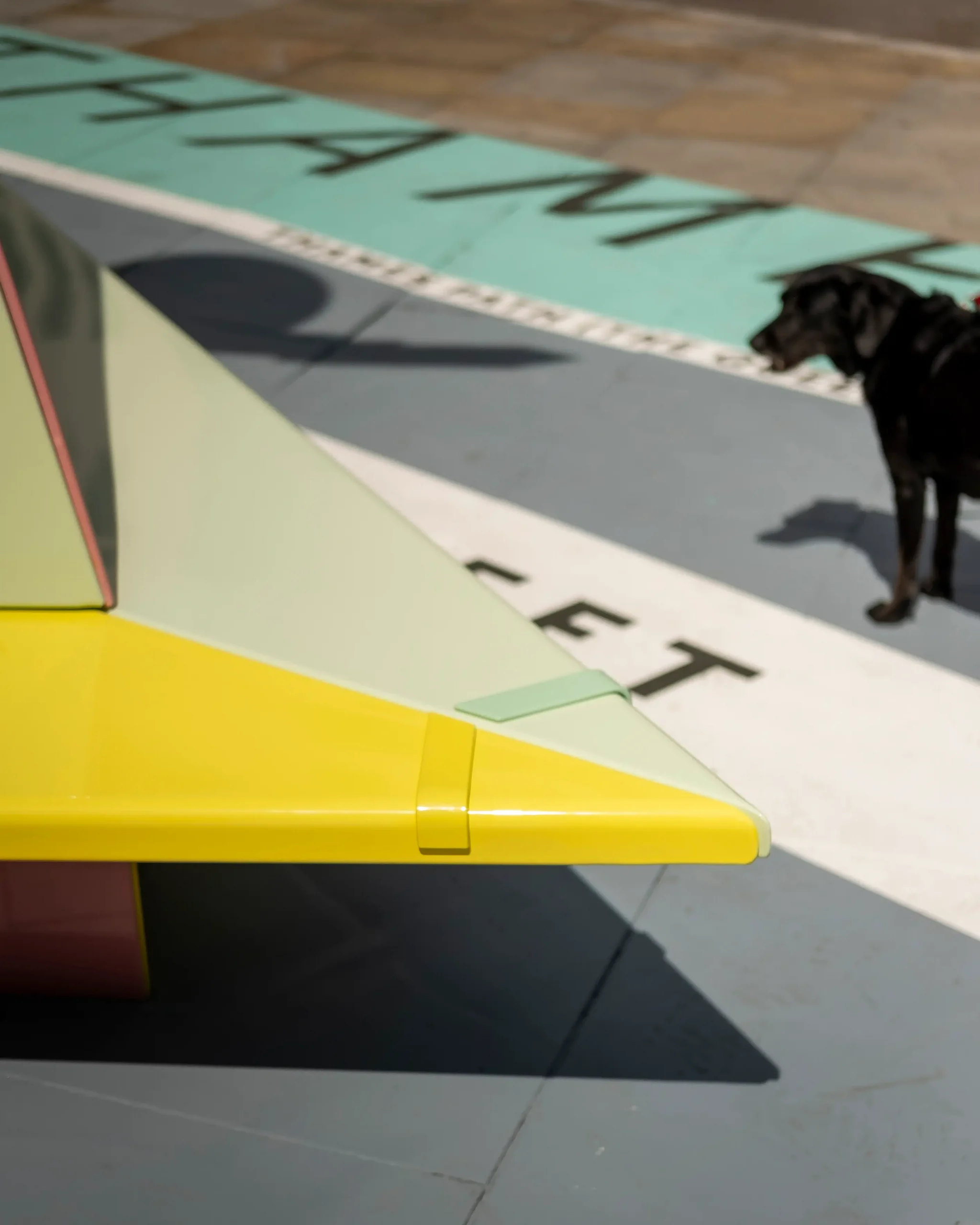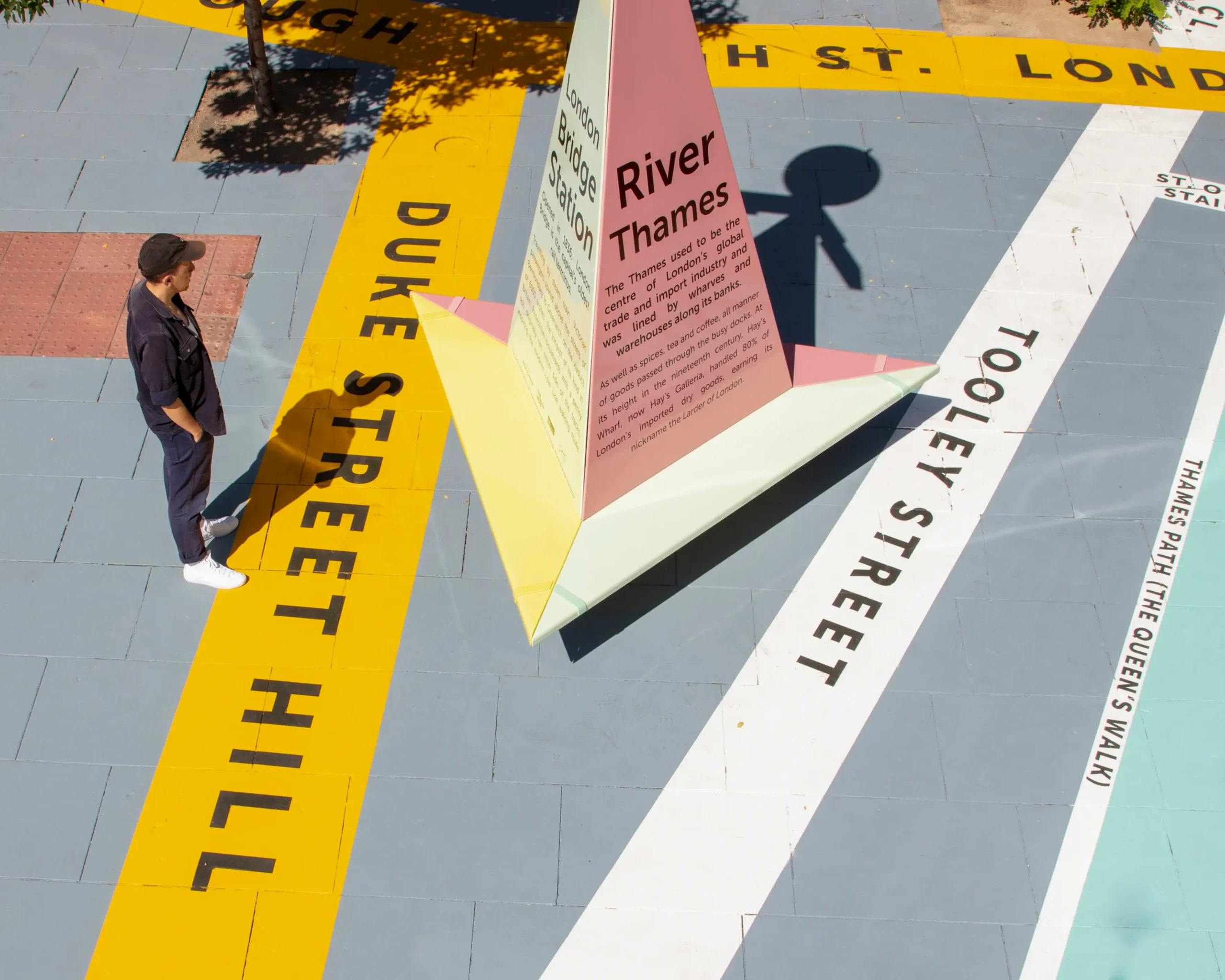Tooley Street
A new urban landmark
Tooley Street is an example of how public realm design can have a transformative effect. CHA won first prize in an open competition to redesign a left-over piece of land next to London Bridge Station. Though heavily trafficked, the space had no clear identity despite being a popular place to rendezvous for people arriving in London by train.
Our design is multifaceted, comprising a number of elements including a scale map of the area printed onto the pavement and a giant signpost, or beacon, which provides local information and directions to specific landmarks. The beacon also incorporates a bench.
The pavement map is formed from street-marking material and depicts local detail including main roads, landmarks, buildings and north sign. This element has some of the qualities of the model village or architectural model, a map you can walk on depicted at a scale pitched somewhere between the miniature and the real thing.
The beacon is like an Ordnance Survey symbol or Google pin come to life. It forms an arrow in plan but is also like a monolith or needle in form. It refers to traditional wayfinding objects in the landscape, often formed in stone or by piles of rocks, but rendered here with a Pop Art clarity. The beacon is fabricated from vitreous-enamel panels which have been screen-printed with text.
The beacon imparts wayfinding information in three ways with each side relating to the three roads that form the edges of the site. An explanatory text gives historic information about each one. Above this, three signposts give directions to specific local landmarks. And, at the top, a polished mirror ball reflects the map and the surrounding area in a more oblique and gently surreal way. Tooley Street has proved a highly successful urban intervention for our clients Team London Bridge, helping to increase dwell time in the area. It was also shortlisted for a New London Architecture award.






